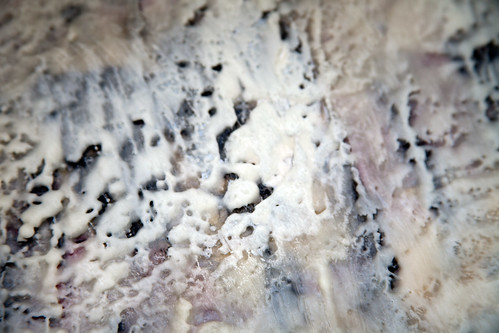In the process of updated my gallery website, HouseOfCarol.com, I decided to add some information to the site about encaustic and the art of encaustic painting. Since I’ve been doing a lot of encaustic work recently, I thought it might be a good idea to update the gallery website a bit with some information about the process and, since I was updating that website with some new information, I thought it might be a good idea too if I could share some of that material here as well.
Here is more information about encaustic for the curious.
Encaustic painting is both a contemporary form of artistic expression and an antique process for painting. Encaustic paintings date back to the 1st century-the technique was used in the Fayum mummy portraits in ancient Egypt circa 100-300 AD and more recently by contemporary American artist Jasper Johns.
Encaustic paintings are generally made by using a mixture of beeswax, damar resin and heat as a medium and typically some type of pigment for coloring. Often artist pigments are used, but other items such as coffee, tea, dirt, or any item containing a coloring can be used to provide the desired hue. Encaustics are both a type of paint medium and a technique, with the technique being heating the wax to a melted state and applying it to a support, ensuring each layer is fused with heat of some kind. The surface is manipulated with tools such as irons, hot air guns, metal spatulas, or other tools to provide the desired appearance of the finished painting.
While this may provide you with the “textbook” definition of encaustics, as a practicing encaustic artist, I like to think of encaustics a bit differently. For starters, there are almost as many encaustic techniques as there are painters working with encaustics-every artist I have worked with or met seems to find their own unique way of working with wax. There really is no “right” or “wrong” way to do it-it’s more like a “jump right in and give it a go” type of painting style.
Encaustics too are really a material study and an excuse for artists to make their own paint. Being very “hands on” the artist gets lost working with layers, embedding objects, working with color, texture, and fusion. There is a simple rhythm to working with encaustics, the melting, the fusing, the working of the materials, it’s almost hypnotic in nature and I find it very relaxing but also sort of a playground for artistic experimentation. There are always new things to try, new techniques to learn and every day in the studio brings new surprises. Working with different types of heat sources, everything from a heat gun to a blow torch, working with different brushes, different wax media, various pigments, a host of found objects, and layer after layer of opaque textural surfaces really lends an element of surprise to each piece. It’s a forgiving medium, yes, but I like to think that each and every encaustic piece is really some kind of “happy accident” as results often do vary when you paint with a blow torch. That’s all really part of the fun of working with the medium though, as painting with encaustics can be more of an adventure and less an academic study in material sciences.
I get asked to demo and speak about encaustics frequently as it is a lesser-known and not as practiced media. I like to explain to people at these demos and talks that encaustics are not the media for you if you are looking for absolute control and are very fussy about having a strict outcome for your artwork. On the other hand, if you are flexible and have a sense of adventure about your painting, you just might find working with encaustics to be a liberating, fun, sometimes challenging but always wondrous experience. If you’re the sort of artist who likes to dabble, play, experiment and try new things, encaustics must just be a wonderful media for you.
Over the course of painting and exhibiting encaustics, I have found too that many patrons either immediately fall in love with the look of the finished wax pieces or just completely fail to understand the appeal of encaustic arts at all. Encaustic paintings are a bit like the “Babe Ruth” of the art world-you will either immediately fall in love and change the way you see things or you will just relegate to the “I don’t get it” pile in the back of your mind.
Shown in this image is a close-up detail of a recently completed encaustic piece from my studio work earlier this year. In this detail, you can see the colors and layers of wax that have been applied to give the finished piece it’s final appearance. This is a small detail (maybe about 1 or 2 inches square) from an 18 inch by 24 inch painted panel.
I look forward to posting more encaustic pieces and sharing more about the process here in the future.
Until next time…


Author
okay, now I want to see the bigger piece…very interesting and creative-I like the term happy accidents…lol!
Author
Thanks!
More pics to follow, I promise.